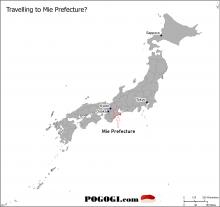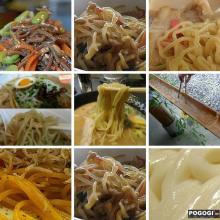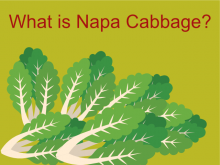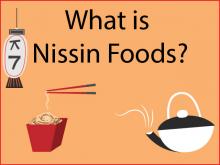Hokkaido Ramen Santouka
Hokkaido Ramen Santouka
100 E Algonquin Rd, 60005Arlington Heights,
(847) 357-0286
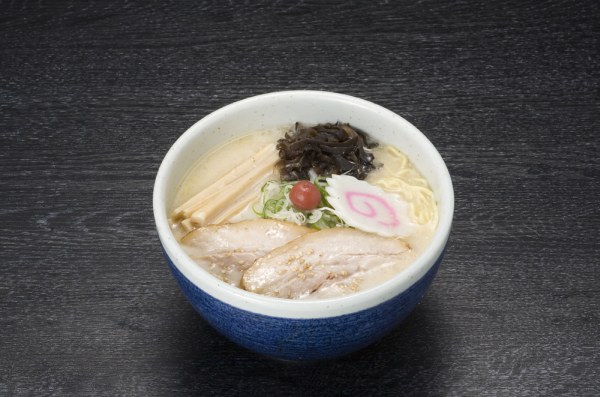
_MG_9727%20-%20N.jpg)
Travelling To Mie Prefecture ?
Travelling To Mie Prefecture ?
Among the wonderful destinations of Japan, some are famous throughout the world, while others still retain part of their authentic charm. Of the undiscovered treasures found here, the Mie prefecture holds a special place, with its inspiring cultural heritage and fascinating natural beauty. The prefecture of Mie is located in the Kansai region of the Honshu Island, with the city of Tsu as the capital. Completely off the beaten path for most travelers to Japan, Mie prefecture is a great destination for people who wish to avoid the tourist crowds, yet still find the same unique experience that captures your heart.
Conveniently located close to Kyoto and with plenty of connections to the capital of Tokyo, Mie Prefecture is one of the hidden marvels of Japan, featuring impressive sacred temples, stunning coastline and pristine forests with majestic waterfalls. A trip to Mie Prefecture in Japan will certainly make anyone fall in love with this fascinating destination.
There are countless reasons to visit this place, yet some stand out from the rest, offering opportunities for inspiring discoveries. One such experience is known as the Kumano Kodo, a collection of pilgrimage routes that connect the most sacred places throughout the Kii Peninsula. These ancient pathways have been used for over 1000 years and it takes several days over mountain passes and through bamboo forests to visit the three temples. Another famous temple is Ise Grand Shrine, once the holiest of all Shinto shrines in Japan, where all Japanese wanted to go at least once in their lifetime.
At the border with the Nara Prefecture, a breathtaking natural area is known as the Akame 48 Waterfalls, an adventure that takes travelers along a short hiking path with countless stunning waterfalls to be admired. A boat ride along the steep Dorokyo Gorge, exploring the serene beauty of the wild valley is equally enticing.
The prefecture of Mie is also a perfect destination to learn more about unique aspects of Japanese culture and history. The Iga Ninja was one of the strongest and most famous ninja groups in the whole country. The Iga-ryu Ninja Museum offers an insightful view into the secretive life and training of these warriors. Another amazing place to see is the Iga Ueno Castle, located near the museum.
The tradition of Ama female divers is also a cultural heritage of Mie Prefecture. Also known as pearl diverse, these women dive for all kinds of underwater treasures like sea urchins, turban snails or abalone. Part of traditions that go back for centuries these women dive to incredible depths and sell their findings in nearby markets. The first cultured pearl farm in the world was founded by Kokichi Mikimoto over a century ago and visitors can now explore the Mikimoto Pearl Island just of and its insightful Pearl Museum.

Mie Prefecture is also a great destination for pure leisure and entertainment, housing a great number and variety of amazing attractions, including some exceptional theme parks. The biggest theme park in all of Japan is the Nagashima Spa Land, with about 50 insane attractions, including some listed in Guinness World Records. Other hugely entertaining locations include Ninja Samurai Kingdom Ise, Shima Spain Village, Shima Marineland, Toba Aquarium and others. This is also the home of the world-famous Suzuka Circuit, where international races are held. It also contains an amusement park with fun rides and attractions. Among the fascinating attractions of Mie Prefecture, the Nabana-no-Sato is certainly one of the most charming. During the summer, this is an enchanting and colorful flower garden with a variety of species, while during the winter, it becomes of the most incredible light shows. Millions of lighting fixtures create an almost otherworldly atmosphere.
There are many other interesting and beautiful places to see and things to do in Mie Prefecture of Japan, making it a complete and diverse destination. Visitors can admire the splendid cherry blossoms of the Shorenjiko Lake or spectacular rice terrace fields of Maruyama, they can stroll through the magnificent plum trees of the Suzuka Forest Garden or explore the historical heritage of Takada Honzan Senjuji in Tsu City.
When all this wandering around get tiresome, it is good to know that Mie also has incredible food, starting with the delicious Matsusaka beef. Although not as famous outside Japan as the Kobe beef, it is equally, if not more prized. It is produced in the city with the same name following strict standards, being known for its exceptional marble and taste. As a coastal prefecture, there are delicious seafood dishes, including lobsters, sushi, clams, abalone and more. Other local dishes include the Ise Udon and the Akafuku rice cakes.
Japanese Noodles
Japanese Noodles
Noodles are an iconic part of Japanese cuisine! It has gain major popularity outside of Japan, especially with the recent boom of Sushi in the last decade. Much like rice, noodles are a staple and often used as a focal point in many Japanese dishes. Walking in the streets of Japan, there will be some kind of noodle shop everywhere you look.
There are plenty of varieties and each region in Japan boasts their own takes on noodles, often featuring local ingredients. In Japan, it’s a common custom to slurp noodles with sound, especially when it is in a broth. Feel free to slurp away if you’re eating in a traditional Japanese noodle shop or cooking these noodles yourself.
Ramen
One of the most popular noodles in Japan and abroad is ramen (considered to be the ultimate comfort food). Although it is associated with Japanese culture and food, ramen originated from Chinese roots and developed into a uniquely Japanese dish. The word ramen comes from the Chinese word, lāmiàn. In the early 1900’s, the first ramen shop opened in Tokyo where it employed Chinese immigrants. The first ramen was quite simple with a few toppings and a simple broth. As time went on, and due to a bigger supply of wheat from the U.S., ramen quickly gained popularity all over Japan.

A unique aspect of ramen noodles is that in addition to wheat, it contains kansui (alkaline water). This is what gives the yellow appearance of the noodles as well as the denser texture. The noodles itself can be thick or thin depending on the region and type of ramen. The toppings can also vary but often includes pork slices, seasoned boiled egg, green onions, nori (seaweed), and more.
Common Types of Ramen
Shoyu Ramen
This type of ramen features a brown soy sauce based broth. The noodles in this ramen are usually about medium thickness and wavy.
Miso Ramen
Originating in Hokkaido, miso ramen uses miso paste (a fermented soybean paste) added to fish, chicken, or pork broth, that creates a rich and flavorful broth. The toppings can vary but because of its origin in Hokkaido, it can feature corn and butter (some of the local foods of Hokkaido).
Tonkotsu Ramen
This type of ramen uses a white-colored pork bone broth. The noodles are usually very thin. In ramen stores that serve tonkotsu ramen, it’s a common practice to ask for a kaedama (extra noodles) after finishing the original portion of noodles. Customers can keep adding noodles to their broth until they feel satisfied.
Shio Ramen
This is a very light tasting ramen with a clear broth. It usually uses a seafood based broth and the toppings are generally simple to highlight the broth and noodles.
For info on ramen click here.
Udon
Udon is a thick and chewy wheat noodle that’s usually accompanied by a soy sauce and fish based broth with different toppings. Toppings can include grated radish, green onions, fried tofu, and even tempura. This noodle also has its roots from China and the oldest accounts of udon can be traced to the 8th century.

Udon also has many regional varieties, with differences in noodle shapes, toppings, and cooking styles. In general, it’s eaten quite simply in order to highlight the texture of the noodle. However, there are also modern versions that have popped up. These include stir fried udon (yakiudon), udon carbonara, or curry udon. Udon noodles is widely used as a Shabu Shabu ingredient. There are countless ways that udon can be served!
Common Udon Dishes
Kitsune Udon
Kitsune means fox in Japanese and this udon is served hot with sweet fried tofu. The sweet fried tofu, called aburaage in Japanese, is said to be the fox’s favorite food! This originates in Osaka where it’s more common to find sweeter dishes.
Tanuki Udon
Another animal-name udon is the tanuki udon. The tanuki is a racoon dog native to Japan. This udon is served hot with fried scraps that come from frying tempura. It is said that tanuki’s are deceptive. For this reason, the fried scraps can appear to be like tempura but they are actually just scraps.
Kake/Zaru Udon
Kake udon and zaru udon are the two most classic and simplest ways that udon can be served. Kake udon is served hot in a broth, and the zaru udon is served cold with the broth on the side for dipping. Both types of udon dishes have some small garnishes to add with the udon but it is kept very simple.
Soba
The main ingredient in soba noodles is buckwheat. The word soba actually means buckwheat in Japanese. Soba noodles are characterized by being thin and firm. Chefs making soba will train for years to achieve perfect cut noodles and firmness!
Compared to wheat noodles, soba is a superfood. The origins date back to the Edo period, around the 17th century. It became popular due to it being able to prevent beriberi, because soba contained thiamine. It has over 30 different styles in cold and hot format dishes depending on the region of Japan.

 by matsuyuki
by matsuyuki
How and when it’s eaten:
Similar to Udon
Soba is eaten in similar ways as udon, either hot or cold, and with the same toppings and garnishes. There are also kitsune, kake, zaru, and tanuki styles of udon.
Important New Years Food
In Japan, people eat soba during New Years Eve. This soba is called toshikoshi soba meaning “Going to the New Year soba”. It’s generally served in a classic way with a warm broth. The soba noodles represent strength and overcoming hardship.
Somen
Somen is an extremely thin wheat noodle often eaten during the warmer seasons. It’s similar in thinness to angel hair pasta. Unlike other noodle varieties, somen is made by stretching it out instead of cutting it. This is how they are able to achieve such a thin and round shaped noodle.
These noodles are extremely popular during summer months, especially during an event called the 'Golden Week' where families catch their somen from a Somen Slide.
Common Ways to Eat Somen
Cold Somen
Somen is most commonly served cold with a dipping sauce and garnishes like ginger and green onions. It’s also common to use ice cubes to chill the noodles as much as possible. Because of how thin the noodles are, it is most suited to be eaten cold. This way, the noodles firm up and don’t become soggy.
Nagashi Somen
This is a traditional way to eat somen and an especially fun activity in the summer. Somen is put into cold running water which goes across a kind of “water slide” made out of bamboo. The somen goes down this “slide” and it needs to be caught with chopsticks to eat it. There have even been some world records related to nagashi somen. The longest nagashi somen “slide” was 3,300 meters and the fastest speed recorded was 30 kilometers an hour.
Nyuumen
Although somen is usually eaten cold, it is also possible to eat it in a warm soup. This style of eating somen is called nyuumen. The broth is similar to what you might use for udon or soba.
Yakisoba
Yakisoba is a common street stall food that has no broth and is made by stir frying noodles in a dark colored sauce, similar to worcestershire sauce. Although the name has soba, this is a dish that is made from the noodles found in ramen. It’s usually stir fried with veggies and topped with red pickled ginger, aonori (green laver), bonito flakes, and Japanese mayonnaise. You can find yakisoba in stalls during Shinto festivals that often happen near shrines.
Yakisoba variations
Yakisoba Pan
Yakisoba can sometimes be found sandwiched inside a bread roll. It may seem weird to have carbs on carbs, but it is a very popular type of Japanese comfort food.
Hiroshima-style Okonomiyaki
Okonomiyaki is a savory Japanese pancake that is filled with various ingredients mixed into a batter. In Hiroshima, they have a distinct style of okonomiyaki which is filled with yakisoba noodles among other ingredients.
Shio Yakisoba
This type of yakisoba is the lighter version of the normal yakisoba. Shio, means salt, and instead of the traditional worcestershire based sauce, it is stir fried with salt and flavors such as garlic and pepper.
Shirataki
This is a noodle that is made from konjac yam, and it is usually a translucent white color. The name shirataki means white waterfall in Japanese and it describes the white color of the falling water.
Shirataki has lots of fiber and almost no calories. It has recently gained popularity as a health and diet food outside of Japan. However, there have also been claims that when they are eaten in large quantities it can cause swelling in the stomach. It’s best to eat them in moderation!
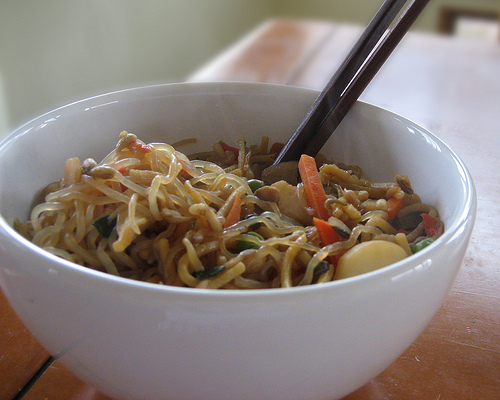
 by mdid
by mdid
How it’s eaten
Shirataki noodles are often found in hot pots because they don't dissolve or get soft when boiled. It’s an important ingredient used in sukiyaki, a sweet soy sauce simmered hotpot. With the increase in popularity as a diet food, it has also been used to replace pasta or other noodles in a wide variety of dishes.
Read more on Shirataki and its Health Benefits
Japanese Pasta
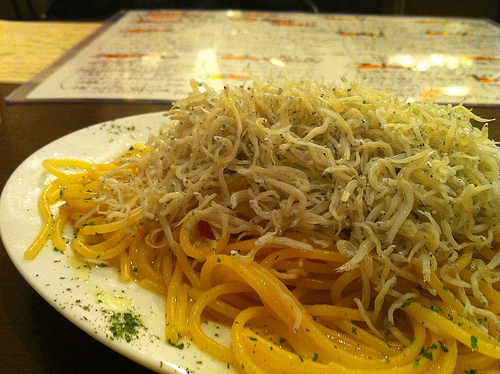
 by hirotomo
by hirotomo
Yes!, believe it or not, Japan has a love for Italian pasta especially noodles such as spaghetti, vermicelli & fusili. Tomato sauce is really popular along with flavors of Japan such as Sea Urchin and Spicy Cod. You probably thinking is there any difference between Traditional Italian Pasta and Japan's version? Well there is and you can read all about it in our Japanese Italian Pasta article.
What Is Napa Cabbage? Everything You Need To Know
What Is Napa Cabbage? Everything You Need To Know
Napa cabbage is a type of Chinese cabbage that belongs to the brassica family, one of the largest plant families known to man. In different parts of Asia it is called differently. In Japan, ‘napa’ is a regional term that means the leaf of a vegetable. In Korea, it is called Baecu and in China it is called dabaicai in Mandarin. In western markets you can find this cabbage simply as called Chinese cabbage.
Now, Napa cabbage doesn’t look like your average cabbage and you might even dismiss it as just another type of lettuce but it’s incredibly beneficial for it. Its appearance is characterized by pale green leaves and white ribs.
How People Consume It
Napa cabbage is a diverse vegetable that can be consumed in a variety of different ways.
Here are a few ideas of how you can incorporate Napa cabbage into your daily diet:
1. Kimchi
Kimchi is a popular lacto-fermented dish that’s made with pickled Napa cabbage. It originates from Korea and requires quite a long brew using hot pepper, garlic, onions, fall radishes, and an airtight container.
The good news is you can speed up the process and make your own overnight kimchi. Simple shred about three cups of Napa cabbage, add a sprinkle of salt, four chopped garlic cloves, 3 tablespoons of white wine vinegar or rice vinegar and one tablespoon of Sriracha or any other garlic-based hot-pepper sauce.
Mix all the ingredients and leave them in the fridge to chill overnight.
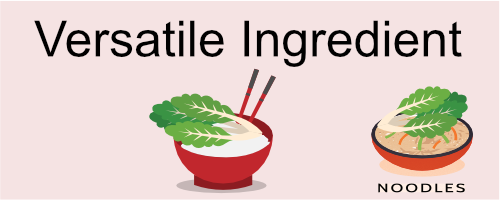
2. Soup
Shredded Napa cabbage can be added to any type of soup without affects its flavor or textures. It pairs well with beef and chicken soups.
Here’s an easy weekday soup recipe for you to try; steam and chop two heads of Napa cabbage and add them to miso soup broth for an instant healthy soup. Or, add it to some Miso Noodle soup for a light summer or fall meal.
3. Stuffed
Take your Napa cabbage, separate the leaves and blanch the whole until they wilt. Now, stuff them with pork, ground beef, rice - whatever tickles your fancy.
Napa cabbage is also great when added to vegetarian cabbage rolls with tempeh or regular Asian ones with meat.
4. Slaw
Coleslaw is one of the oldest and most loved dishes that can go with almost any dish. It’s also an easy way to incorporate Napa cabbage by swapping your usual European cabbage for it. Add some yogurt and you’ve got yourself a creamy winner!
5. Spring Rolls
Add some Napa cabbage to your spring rolls. It doesn’t matter if its raw or cooked - it’ll taste delicious when paired with bean thread noodles, pork, shrimp, and veggies all wrapped into one spring roll. Have some Asian-style dipping sauce on the side such as peanut sauce and you’re good to go!
6. Stir Fry
Napa cabbage is a regular addition to most Asian stir-fry recipes and that’s because it pairs well with most ingredients and can be cooked in a variety of ways.
You can dice the leaves, separate them from the stems or grate them in - the choice is yours! Just make sure to keep the green parts because it can be added to the dish towards the end of the cooking process.
What Is Nissin Foods?
What Is Nissin Foods?
Nissin Foods is a food company based in Japan. It focuses on the production of instant noodles and other popular convenience foods. The company is based in Osaka and has built a global market for its products during the 72 years it has been in existence.
Nissin Foods was founded back in 1948. Its first ramen instant noodle came to market 10 years later. Initially, the company was named Chuko Sosha. Its name was changed to Nissin Foods soon after the ramen instant noodles launched. It has remained so ever since.
The popularity of the products offered by Nissin Foods has grown outside Japanese borders. As the demand for instant noodles and convenience foods grew all over the world, Nissin Foods decided to open a subsidiary in the United States in 1970. Its popular ramen noodles were introduced to the US market in 1972 but they were sold under the name “Top Ramen.”
Nissin Foods and Its Legacy of Instant Noodles
When Momofuku Ando founded Nissin Foods, his primary purpose was to create an easy and simple dish that would help deal with the acute food shortage that engulfed Japan after the Second World War. Little did he know that this simple innovation would lead to a global revolution.
The instant ramen noodles have of course changed a lot ever since. Nissin Foods has launched dozens of products skews too but there is one thing that has remained the same for the seven decades. It still takes three minutes or less to cook the noodles. Ando knew that the biggest appeal for his ramen noodles in a post-war Japan was the simplicity and ease of cooking.
With just a packet of noodles and some water, people could enjoy a tasty and nutritious meal that had all its roots in Japanese cuisine. Japan has produced dozens of top global brands in various sectors. But Nissin Foods is probably one of the most recognizable Japanese companies in the world outside the automotive and tech sectors.
Growth and Expansion
For the 72 years Nissin Foods has been in existence, the company has expanded its operations all over the world through acquisitions and investments into new factories. As of March 2011, the company had over 7,500 employees all over the world. Today, Nissin Foods has established its operations in nearly 20 countries and territories.
The product catalog has also grown too. Right now, there are at least 10 product skews available for Nissin Foods customers in various parts of the world. In addition to this, Nissin Foods has also introduced various food fusions designed to make its noodles more nutritious, tastier, and healthier. The company is also offering chicken, beef, and shrimp inspired noodles in order to appeal to the diverse tastes in the markets it’s already working in.
The success story of Nissin Foods is the perfect example of how Japanese innovation and will power has had a massive impact globally. The company, and its tasty noodles, have led a revolution in the food industry that continues to be felt for decades since its finding.
Sushi Nanaimo
Sushi Nanaimo
350 Nanaimo St, V5L 4R7Vancouver, BC
(604) 876-9200
Japango
Japango
122 Elizabeth St, M5G 1P5Toronto, ON
(416) 599-5557
Sora Sushi Bar
Sora Sushi Bar
325 Central Parkway W, L5B 3X9Mississauga, ON
(905) 270-0101
Domo Sushi
Domo Sushi
1160 Melville Street, V6E 2Y1Vancouver, BC
(604) 688-2258



